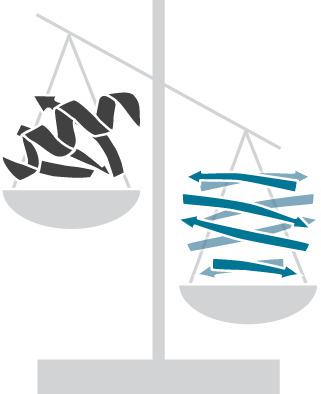当前位置:
X-MOL 学术
›
Biopolymers
›
论文详情
Our official English website, www.x-mol.net, welcomes your feedback! (Note: you will need to create a separate account there.)
Specific binding-induced modulation of the XCL1 metamorphic equilibrium
Biopolymers ( IF 2.9 ) Pub Date : 2020-09-28 , DOI: 10.1002/bip.23402 Acacia F Dishman 1, 2 , Francis C Peterson 1 , Brian F Volkman 1
Biopolymers ( IF 2.9 ) Pub Date : 2020-09-28 , DOI: 10.1002/bip.23402 Acacia F Dishman 1, 2 , Francis C Peterson 1 , Brian F Volkman 1
Affiliation

|
The metamorphic protein XCL1 switches between two distinct native structures with different functions in the human immune system. This structural interconversion requires complete rearrangement of all hydrogen bonding networks, yet fold-switching occurs spontaneously and reversibly in solution. One structure occupies the canonical α-β chemokine fold and binds XCL1's cognate G-protein coupled receptor, while the other structure occupies a dimeric, all-β fold that binds glycosaminoglycans and has antimicrobial activity. Both of these functions are important for the biologic role of XCL1 in the immune system, and each structure is approximately equally populated under near-physiologic conditions. Recent work has begun to illuminate XCL1's role in combatting infection and cancer. However, without a way to control XCL1's dynamic structural interconversion, it is difficult to study the role of XCL1 fold-switching in human health and disease. Thus, a molecular tool that can regulate the fractional population of the two XCL1 structures is needed. Here, we find by heparin affinity chromatography and NMR that an engineered XCL1 variant called CC5 can trigger a dose-dependent shift in XCL1's metamorphic equilibrium such that the receptor binding structure is depleted, and the antimicrobial structure is more heavily populated. This shift likely occurs due to formation of XCL1-CC5 heterodimers in which both protomers occupy the β-sheet structure. These findings lay the groundwork for future studies seeking to understand the functional role of XCL1 metamorphosis, as well as studies screening for a drug-like molecule that can therapeutically target XCL1 by tuning its metamorphic equilibrium. Moreover, the proof of concept presented here suggests that protein metamorphosis is druggable, opening numerous avenues for controlling biological function of metamorphic proteins by altering the population of their multiple native states.
中文翻译:

XCL1变质平衡的特异性结合诱导调节
变质蛋白 XCL1 在人体免疫系统中具有不同功能的两种不同的天然结构之间切换。这种结构相互转换需要所有氢键网络的完全重排,但折叠转换在溶液中自发且可逆地发生。一种结构占据典型的 α-β 趋化因子折叠并结合 XCL1 的同源 G 蛋白偶联受体,而另一种结构占据二聚体、全β折叠,与糖胺聚糖结合并具有抗微生物活性。这两种功能对于 XCL1 在免疫系统中的生物学作用都很重要,并且每个结构在接近生理条件下的分布大致相同。最近的工作已经开始阐明 XCL1 在对抗感染和癌症方面的作用。但是,没有办法控制 XCL1' 由于动态结构相互转换,很难研究 XCL1 折叠转换在人类健康和疾病中的作用。因此,需要一种可以调节两个 XCL1 结构的分数种群的分子工具。在这里,我们通过肝素亲和色谱和核磁共振发现,一种名为 CC5 的工程化 XCL1 变体可以触发 XCL1 变质平衡中的剂量依赖性转变,从而使受体结合结构耗尽,并且抗菌结构更加密集。这种转变可能是由于 XCL1-CC5 异二聚体的形成,其中两种原体都占据了 β-折叠结构。这些发现为未来寻求了解 XCL1 变态的功能作用的研究奠定了基础,以及研究筛选可以通过调整其变质平衡来治疗靶向 XCL1 的药物样分子。此外,这里提出的概念证明表明蛋白质变态是可药物化的,通过改变其多种天然状态的种群来控制变质蛋白的生物学功能开辟了许多途径。
更新日期:2020-09-28
中文翻译:

XCL1变质平衡的特异性结合诱导调节
变质蛋白 XCL1 在人体免疫系统中具有不同功能的两种不同的天然结构之间切换。这种结构相互转换需要所有氢键网络的完全重排,但折叠转换在溶液中自发且可逆地发生。一种结构占据典型的 α-β 趋化因子折叠并结合 XCL1 的同源 G 蛋白偶联受体,而另一种结构占据二聚体、全β折叠,与糖胺聚糖结合并具有抗微生物活性。这两种功能对于 XCL1 在免疫系统中的生物学作用都很重要,并且每个结构在接近生理条件下的分布大致相同。最近的工作已经开始阐明 XCL1 在对抗感染和癌症方面的作用。但是,没有办法控制 XCL1' 由于动态结构相互转换,很难研究 XCL1 折叠转换在人类健康和疾病中的作用。因此,需要一种可以调节两个 XCL1 结构的分数种群的分子工具。在这里,我们通过肝素亲和色谱和核磁共振发现,一种名为 CC5 的工程化 XCL1 变体可以触发 XCL1 变质平衡中的剂量依赖性转变,从而使受体结合结构耗尽,并且抗菌结构更加密集。这种转变可能是由于 XCL1-CC5 异二聚体的形成,其中两种原体都占据了 β-折叠结构。这些发现为未来寻求了解 XCL1 变态的功能作用的研究奠定了基础,以及研究筛选可以通过调整其变质平衡来治疗靶向 XCL1 的药物样分子。此外,这里提出的概念证明表明蛋白质变态是可药物化的,通过改变其多种天然状态的种群来控制变质蛋白的生物学功能开辟了许多途径。



























 京公网安备 11010802027423号
京公网安备 11010802027423号